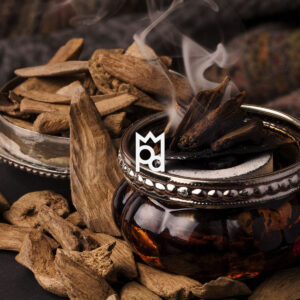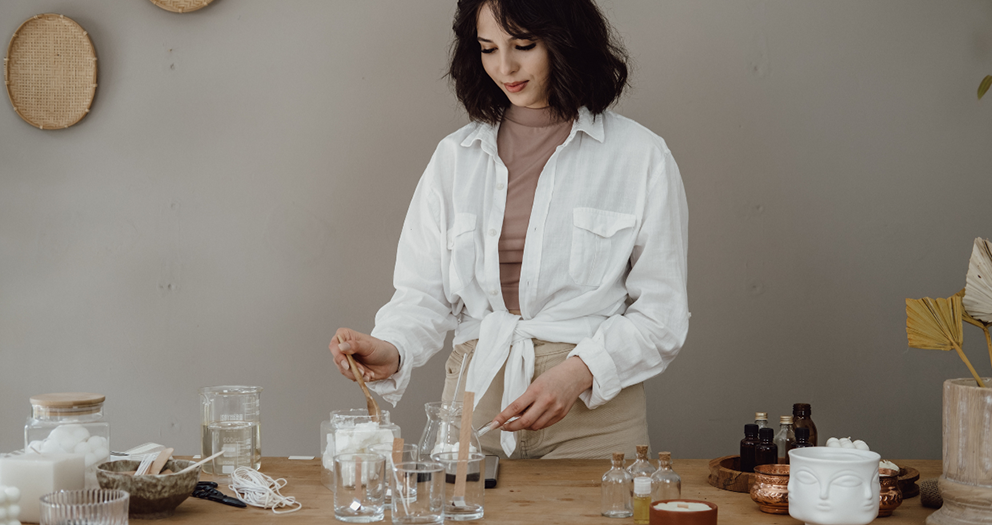Table of Contents
Agarwood, also known as oud, is one of the most coveted ingredients in the fragrance world. Its rich, deep, and luxurious scent has fascinated perfumers and scent enthusiasts for centuries. In this post, we’ll explore everything there is to know about the splendor of agarwood scent, from its history to how it’s used in perfumery today.
What Is Agarwood Oud?
Agarwood is a resinous wood produced by certain species of Aquilaria trees, primarily found in Southeast Asia. When the tree is infected by a specific type of fungi, it produces a dark resin, which is then harvested to create the distinct and powerful fragrance known as oud. This unique transformation makes agarwood a rare and valuable commodity in the fragrance world.
The History Of Agarwood Oud
Agarwood has a long and rich history. Its use dates back thousands of years in many cultures, particularly in Southeast Asia, the Middle East, and India. It has been prized for its calming, spiritual properties and has been used in religious ceremonies, as incense, and, of course, in perfume. The scent of agarwood was believed to be sacred, creating a deep connection to the divine.
The Preciousness of Agarwood Trees
Agarwood’s rarity comes from the fact that not all Aquilaria trees produce the resin that forms oud. Only a small percentage of trees, under specific conditions, become infected by the mold (fungi) that triggers this transformation. Because of the slow-growing nature of these trees and their limited supply, agarwood has become incredibly valuable.
The Extraction Process of Agarwood Oil
Harvesting agarwood and extracting its oil is a delicate process. The infected resinous wood is chipped and distilled to produce oud oil. This process can take months and requires precision to ensure that the highest quality oil is extracted. The time and expertise involved in extracting agarwood oil contribute to its high price.
The Various Types of Agarwood
Agarwood comes in various grades, determined by factors such as the resin content and the region it comes from. Higher-quality agarwood tends to be darker, denser, and richer in scent. Regions such as Cambodia, India, and Laos are famous for producing high-quality agarwood with distinct olfactory profiles.

Agarwood in Perfumery
Agarwood has become a cornerstone in the world of luxury perfumery. Its deep, woody, and slightly sweet aroma creates a long-lasting and unforgettable scent profile. Perfumers love using oud as a base note because of its complexity and ability to evolve over time on the skin.
Do perfumes utilize natural agarwood?
Due to its rarity and high cost, many perfumes do not use natural agarwood oil. Instead, synthetic alternatives, known as “oud accords”, are often used to replicate the scent of natural agarwood. While natural agarwood oil is prized for its complexity and depth, the synthetic version can still offer a beautiful interpretation of the oud scent at a more affordable price.
Longevity of the Agarwood Scent
One of the reasons agarwood is so prized in perfumery is its impressive longevity. A perfume with oud can last for hours, if not days, on the skin, making it a favorite for those who want a fragrance that sticks around. The scent’s depth also means it evolves, starting with rich, earthy tones and mellowing into softer, sweet, and smoky nuances.
Complementing Scents for Agarwood
Agarwood pairs beautifully with a variety of scents. In perfumery, it’s often combined with florals like rose or jasmine, spices like saffron or cardamom, and other woods like sandalwood. The combination enhances the richness of the oud, creating a harmonious balance that appeals to both men and women.
What Does Agarwood Smell Like?
Agarwood has a complex scent profile. It is often described as woody, deep, and rich, with subtle hints of sweetness, spice, and earthiness. The aroma can also be slightly smoky or leathery, giving it a luxurious, intoxicating edge.
Agarwood Scent vs Sandalwood
Agarwood and sandalwood are both woody scents, but they differ in intensity and character. Agarwood is darker, richer, and more intense, with smoky and earthy undertones. Sandalwood, on the other hand, is creamier, softer, and has a warm, sweet undertone. Both are highly prized in perfumery but offer distinct experiences.
Agarwood Scent vs Palo Santo
Palo santo has a lighter, more uplifting scent compared to the heavy, rich aroma of agarwood. While both are woody, palo santo tends to be fresher, with fruity and pine-like notes, whereas agarwood is denser and more intense with leathery, earthy facets. Palo santo is often used in spiritual practices for its cleansing properties, while agarwood is used for its deeper, more meditative qualities.
Delving Deeper into the Underlying Notes of Agarwood
Agarwood’s complexity stems from its deep, woody, and resinous base. Some agarwood oils may also have floral, spicy, or fruity nuances depending on the tree’s region and resin quality. As it develops on the skin, the scent can reveal layers of sweetness, musk, and balsamic undertones, making it one of the most captivating materials in the fragrance world.
FAQs About Agarwood Scent (Oud)
Which type of agarwood is best?
The best type of agarwood depends on personal preference and use. Cambodian and Indian agarwood are often considered top-tier due to their rich and complex scent profiles. However, the quality of agarwood also depends on the resin content and the specific tree from which it’s harvested.
Why is agarwood so expensive?
Agarwood is expensive because it’s incredibly rare. Only a small percentage of Aquilaria trees produce the resin needed to create oud, and it can take years for this resin to form. Additionally, the extraction process is labor-intensive, and high-quality agarwood oil requires significant time and expertise to produce.
Is agarwood and oud the same thing?
Yes, agarwood and oud are the same. “Oud” is the Arabic word for agarwood, and it refers to both the resinous wood and the oil extracted from it.
How is agarwood scent perceived by most people?
Most people perceive agarwood scent as rich, intense, and luxurious. Its complex profile can be earthy, smoky, and slightly sweet, with undertones that evolve and deepen over time. While its depth can be overwhelming to some, those who appreciate complex fragrances often find agarwood to be deeply captivating and addictive.
Do you host any Agarwood scents in your assortment?
Not one, but 4 unique oud scent combinations can be found in our assortment, each with its own special character:

A dry, dark and enticing all-woody fragrance, that along with the addition of musk at its base, presents a totally unique perspective by boosting agarwood’s smoky nature. Quite daring and niche as a scent but an absolute stand-out when it comes to woody blends.

This one makes little room at the base for leathery scents to come forth and introduces complimentary exotic spices to offer an oriental twist to the typical oud aroma. More sensual than the first, less balsamic though. Still a well balanced oriental oud fragrance overall.

Super dark, smoky and dead serious agarwood scent. Utilizing the most alluring spices and and the sooty character of pure tobacco, this creation is for the very few who wish to incorporate a deep and mysterious fragrance to their product line up.

If you are aiming for just one 100% oud scent then Oud Incense Fragrance Oil in all its rich, balsamic glory is for you! A perfectly rounded scent that captures that mysterious but unmistakable aroma of a smoky agarwood.
In conclusion, agarwood (oud) is more than just a scent—it’s a journey through history, rarity, and luxury. Whether you’re new to this unique fragrance or a seasoned oud enthusiast, there’s always something more to discover about this enticing aroma.







Write a comment
Your email address will not be published. All fields are required